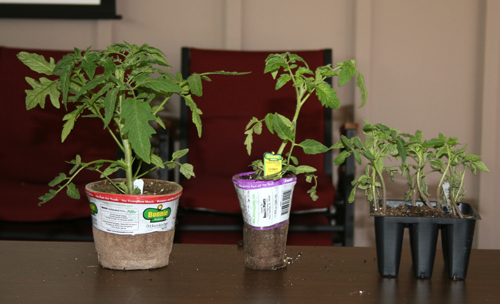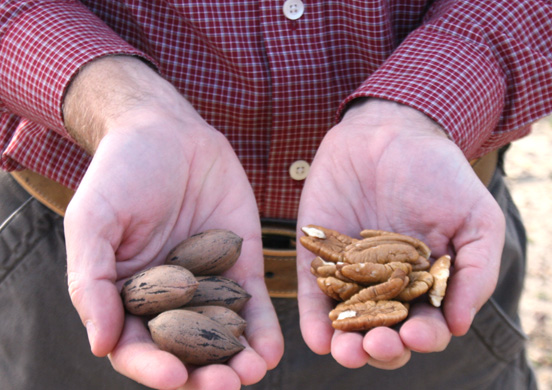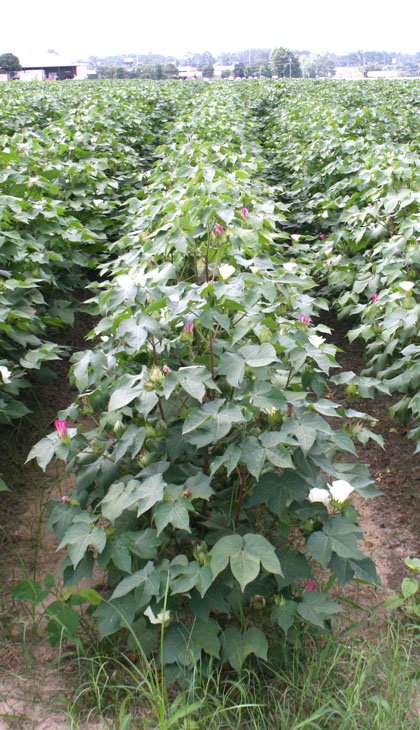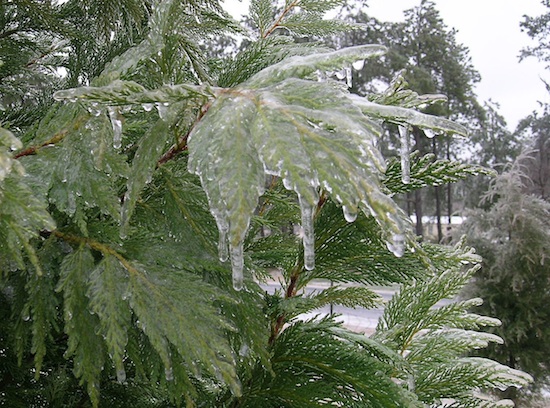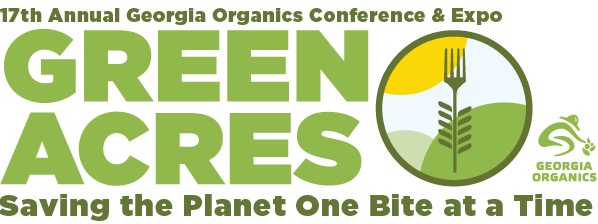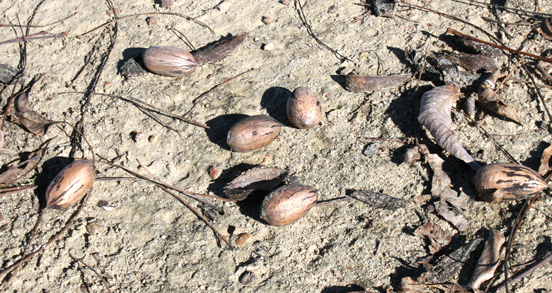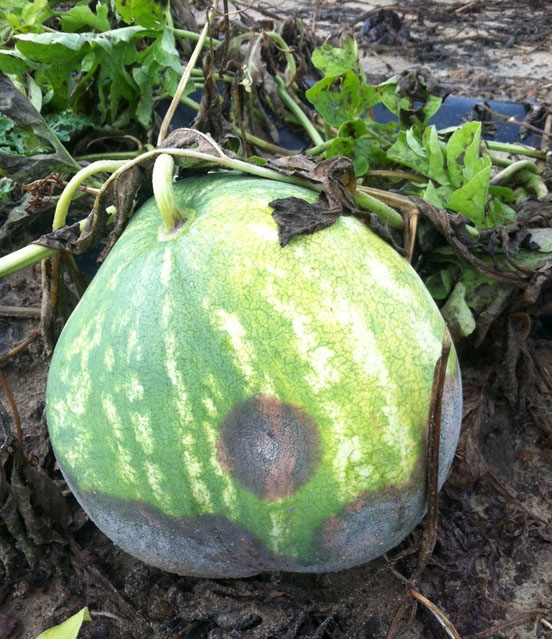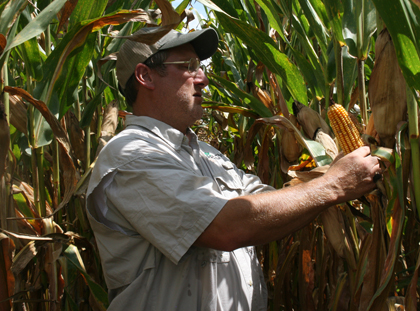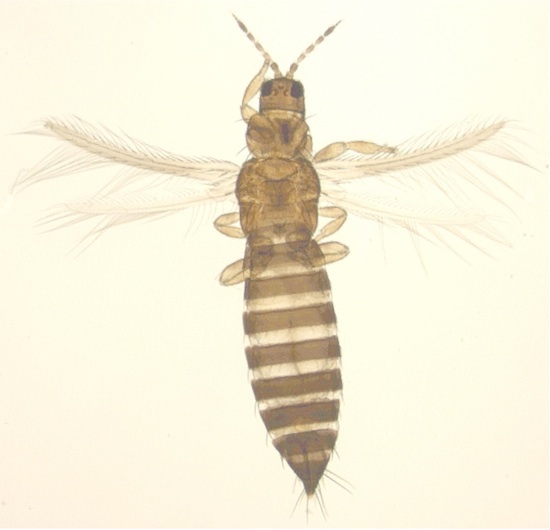 CAES News
CAES News
Thrips Damage
A tiny insect proved to be a formidable foe for Georgia farmers in 2013.
Whether thrips will deliver a similar punch in 2014 remains to be seen. There are more than 7,000 species of thrips, but only two cause problems for Georgia farmers and UGA researchers — tobacco thrips and western flower thrips.

